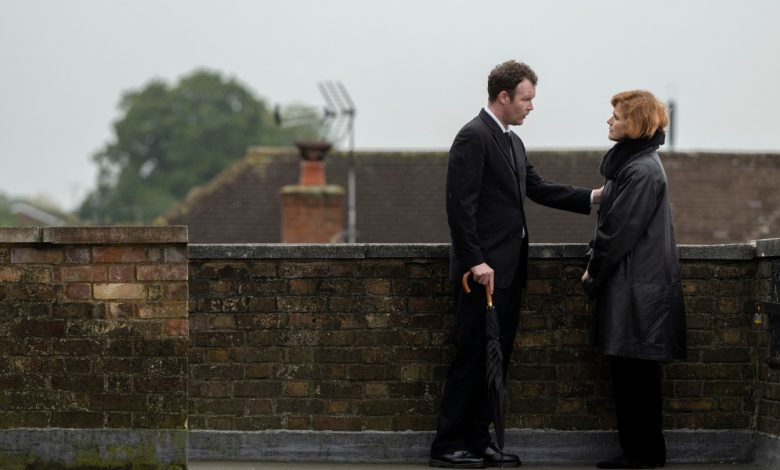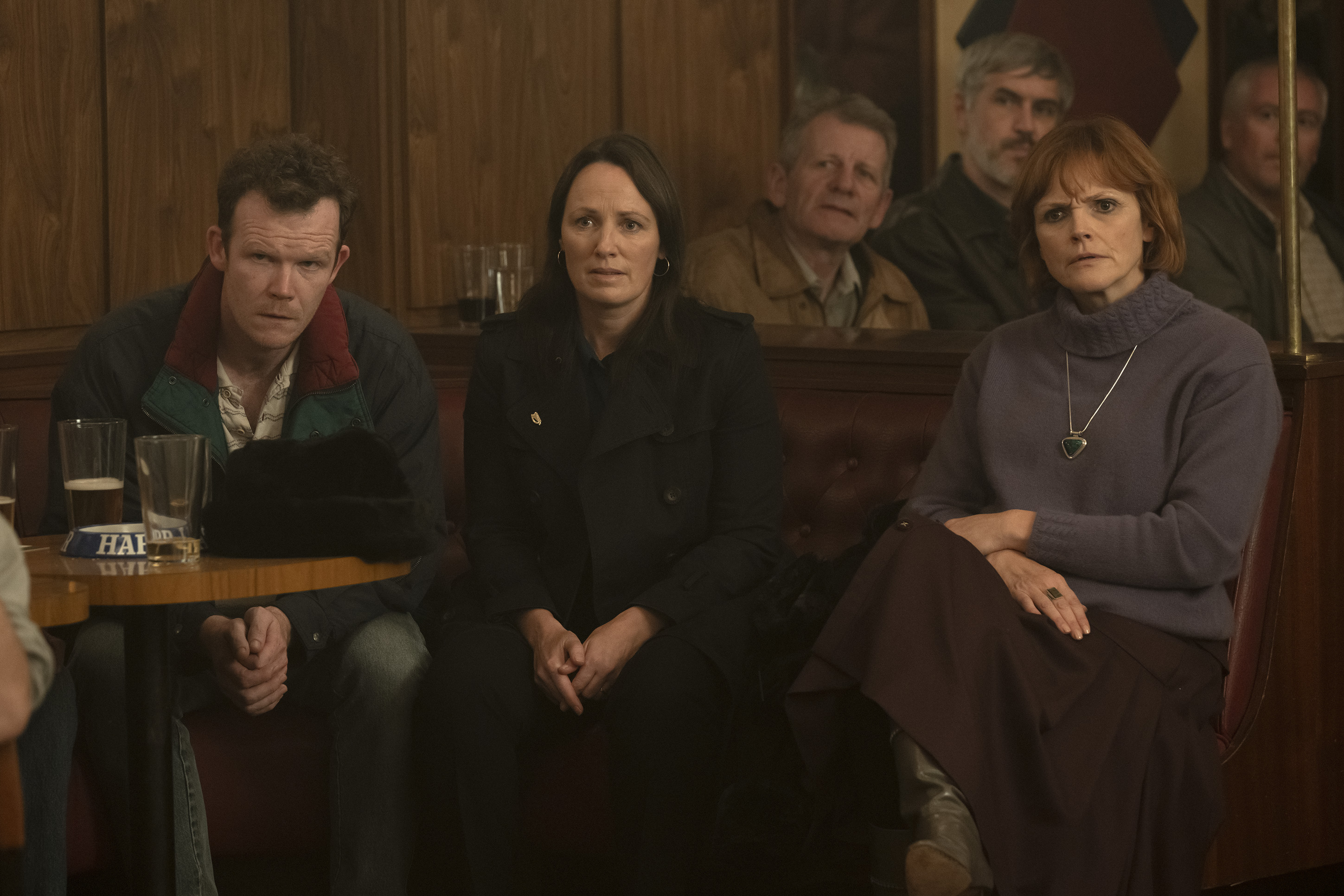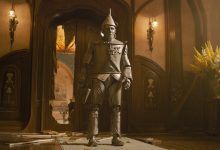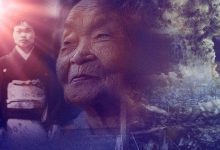‘Say Nothing’ Creatives Discuss the Show’s Emotional Ending: “TV Can Be a Social Good”

[This story contains major spoilers from the Say Nothing finale.]
In his 2019 book Say Nothing, journalist Patrick Radden Keefe put forth a potential answer to one of the Troubles’ lingering mysteries: Who killed Jean McConville?
The author laid out a case for a conclusion that he came to after years of reporting: that Provisional Irish Republican Army volunteer Marian Price fired the bullet ultimately killing the single mother of 10 and one of Northern Ireland’s “Disappeared.” (Price said in a statement after the release of the book that she “vehemently denies” the allegations.) Accused of being an informant for the British Army during the period of sectarian conflict, McConville had been abducted from her Belfast home in 1972 by members of the IRA and killed. After decades of searching, her remains were finally discovered on a beach in Ireland in 2003. Three years later, the police ombudsman for Northern Ireland released the results of an investigation finding there was no evidence that McConville was a British informant.
In the final episode of FX’s Say Nothing adaptation, show creator Josh Zetumer and episode director Michael Lennox adapt this part of Radden Keefe’s reporting in an emotional scene filmed on a beach in the south of England. The creatives depict Dolours Price (played by Lola Petticrew), Marian Price (Hazel Doupe) and Pat McClure (Martin McCann) deciding to take turns firing shots, with Marian Price’s shot ultimately killing McConville.
In a finale-focused interview, the two creatives discussed what it was like to film that “harrowing” scene on the beach, the series’ depiction of Dolours Price’s death and how the idea of “the destructive power of silence” animated the finale.
***
Josh, you previously told THR that with each episode you explore a certain theme. I’m wondering if you can explain the theme in this final episode.
JOSH ZETUMER There’s really a lot going on in the finale, so it is hard to distill it down into just one thing. I think if I was going to do it, I would probably talk about the idea of silence, and particularly the destructive power of silence that surrounds the IRA and IRA activity. For Dolours in particular, you have this woman who’s done these things and who’s now not allowed to talk publicly at all about what she’s done, because of the culture of silence surrounding the IRA. And the same thing is true for the victims: They fear IRA retaliation if they speak out in any way. So this idea that not talking about the things that were done during the conflict could lead to all of this unprocessed trauma, not just for the victims, but also for the perpetrators, was the thing that I personally really wanted to explore.
MICHAEL LENNOX I directed episodes one, two, eight and nine, and I always talked with Josh about the romance of radical politics, but also the cost of it. In episodes one and two, it has that freer [feeling of] what it’s like to be 18 and idealistic at this particular time in the late ’60s and join this cause. And then we fast forward into a modern Belfast where people had to live — and Dolours and the McConville kids, especially — with what happened and the unprocessed trauma of that. So it was really exploring for me the cost of that and diving in deep.
What was behind the creative decision to show Dolours seeing a vision of Pat (Martin McCann) giving her another assignment before she dies?
ZETUMER Oh, I hate talking about a moment and saying explicitly what that moment is intended to be. That’s one of those little moments that you hope can feel like, this sounds just so terribly corny, but a little bit of poetry, and I hope I can say that without sounding like an asshole. But Dolours was seeing ghosts, I think, in real life. And she talked about having visions of some of her victims. At this point, she was very haunted by what she had done. And the vision of Pat — I think there is a clear meaning that I would prefer not to get into — was really meant to evoke a portrait of a woman who is haunted by what she’s done. And particularly in that she became a kind of ferryman, ferrying people from one side to the other, and so in the end she is witnessing her own crossing over, as it were.
In the book, Patrick details the process that led him to believe that Marian Price might have killed Jean McConville. It’s very carefully written and charts the steps that led him to believe this was the case. What was the calculus behind how you decided to present Marian’s role in the death in the series?
ZETUMER To me, the ending in the book — and I know this is true for Patrick as well — is not speculative. It’s definitely not meant to be, “this is what might’ve happened.” It was really thoroughly fact-checked by multiple sources. So despite the narrative device that Patrick uses of putting himself in the story, the ending is meant to be definitive: This is the killer of Jean McConville. If Patrick didn’t feel that way, he wouldn’t have printed it. And if we didn’t feel way, we wouldn’t have put it on TV.
The other thing I would say is just that there are certain moments in the show where you don’t have as much historical detail as you would like inherently. [But] for the ending, particularly for that sequence, we had a ton of detail because Dolours talked about what happened very explicitly. So in those moments, which is true for most of the very sensitive moments in the show, we could stay as close to reality as possible.

Michael, I’m wondering if you can describe what it was like to film that Jean McConville (played by Judith Roddy in the series) assassination scene, given what a pivotal role it plays in the story.
LENNOX It was harrowing to film a scene like that. Especially for me, being from Northern Ireland and [having] a close connection with the place. And just by nature of the scene, it’s an extraordinarily emotional scene be part of, and for the actors to do. It was [important] for me to take it as seriously as I could and everyone did that night we filmed it. The actors, everyone knew what we were doing, why we were doing it, and then wanted to put it out there in the best way we could.
ZETUMER One thing about the storyline in general that’s really interesting was concerning Hazel [who plays Marian]. When Hazel signed on to do the project, she had read the first few scripts, but she was only about halfway through the book. And so she didn’t know what her character was going to have to do. At some point we had to have a conversation with her and said, “This is what your character has done. You’re the killer of Jean McConville.” And you could just see on her face how heavy all of that was sitting and how seriously she was taking it and how much it meant to her, and how much it meant to Lola in that moment. And honestly, I think one of the most special things about shooting this series was that Lola and Hazel had formed this instant bond on set, and they were supporting each other and lifting each other up. And I know that they both helped each other out through this difficult and harrowing scene.
The series gives the contact information for the Independent Commission for the Location of Victims’ Remains in one of the title cards at the end. Why was that important for you to do?
LENNOX I think it’s very, very important that there still remains victims who haven’t been found to this very day. There’s still countless people that are seeking justice and deserve justice. And I think if there’s one thing our series can do, it’s a big hope that it may bring some of this stuff up again as a discussion point. So I thought that was one of the least things we could do in a story like this.
ZETUMER It felt absolutely imperative. I mean, there’s four families still [whose family members disappeared during the Troubles], and the bodies are still out there somewhere and people are still searching. All I can do is echo what Mike said. I mean, at its very best, TV can be a social good. And if our show in any way… you almost don’t even want to say it out loud, to hope that it could do some good like that. But yeah, that would be so incredible. And the utmost goal of the show.
Overall, what message or questions do you hope this episode leaves viewers with as they conclude the series?
ZETUMER There’s no simple answer because the show doesn’t have one idea at its center. There’s a lot of different ways to look at the show. I would just go back to one of the things that Mike said, which is that we’re seeing the cost of political violence for both the victims and the perpetrators. Jean was a widowed mother of 10, and her death resulted in a 30-year nightmare of grief and uncertainty for her kids. And then also remember that Marian Price is only 19 at this moment when she kills Jean McConville. And so it’s a 19-year-old girl who’s being ordered not just to shoot a person but destroy so many lives with one bullet. And it’s asking the question, do you feel for that young girl who is on that beach, not because she wants to be there, but because she’s following her beliefs right off a cliff? And the show is not telling you that you should, but it is asking a question about the cost of violence and who is affected.
LENNOX One of the other things for me is that maybe not an awful lot of people know this story, specifically internationally, about the Disappeared and Jean McConville. I think that is a really good thing [to bring the story to a larger audience]. And also for a new generation of people back home in the U.K. to look at this story again. And also not just this story, but all the stories. This is one book and one TV series that isn’t the definitive story of the Troubles. So I hope it opens up and points to other books, to other documentaries and opens up the conversation.
***
Say Nothing is now streaming all episodes on Hulu. Read THR‘s coverage on bringing the Troubles to television, and an interview with Dolours Price actors Lola Petticrew and Maxine Peake.
Source: Hollywoodreporter
Related Posts
- Roundball Rocked: With NBA Return Looming, NBC Purges Scripted Roster
- SoundCloud Says It “Has Never Used Artist Content to Train AI Models” After Backlash on Terms of Service Change
- Fox News’ Camryn Kinsey Is “Doing Well” After Fainting on Live TV
- Kerry Washington and Jahleel Kamera in 'Shadow Force.'
Courtesy of Lionsgate
…
- This Alternative Artist Landed a Top-20 Chart Debut With an Album Made Almost Entirely on His Phone





